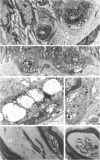Abstract
Single-unit recordings were made from afferent nerve fibres supplying slowly adapting type I (s.a. I) cutaneous mechanoreceptors in anaesthetized vitamin A deficient and control rats. Trains of thirty repetitive mechanical stimuli with 0.1 s rise time, 1.9 s plateau phase, and 0.7 s interstimulus interval were applied. A feed-back mechanism maintained the force of stimulation at 20 mN during the plateau phases and the contact force between stimuli at 0.5 mN. All displacement values in the group of vitamin A deficient rats were significantly larger than the corresponding control values. Residual indentations were increased by 70-100% while maximal indentations were only about 40% higher. These results indicate a non-linear increase in compliance of the skin and underlying tissues. S.a. I receptors were found to be significantly less responsive in vitamin A deficient animals. Mean numbers of impulses were about 25% lower in the vitamin A deficient group than in controls throughout the entire train of thirty stimuli. In vitamin A deficient rats, Merkel cells and adjoining nerve terminals showed signs of degeneration of a variety of cell organelles, particularly the mitochondria. Degenerative changes induced by vitamin A deficiency especially in the Merkel cells appeared to be a major cause of the reduction of responsiveness in s.a. I receptors.
Full text
PDF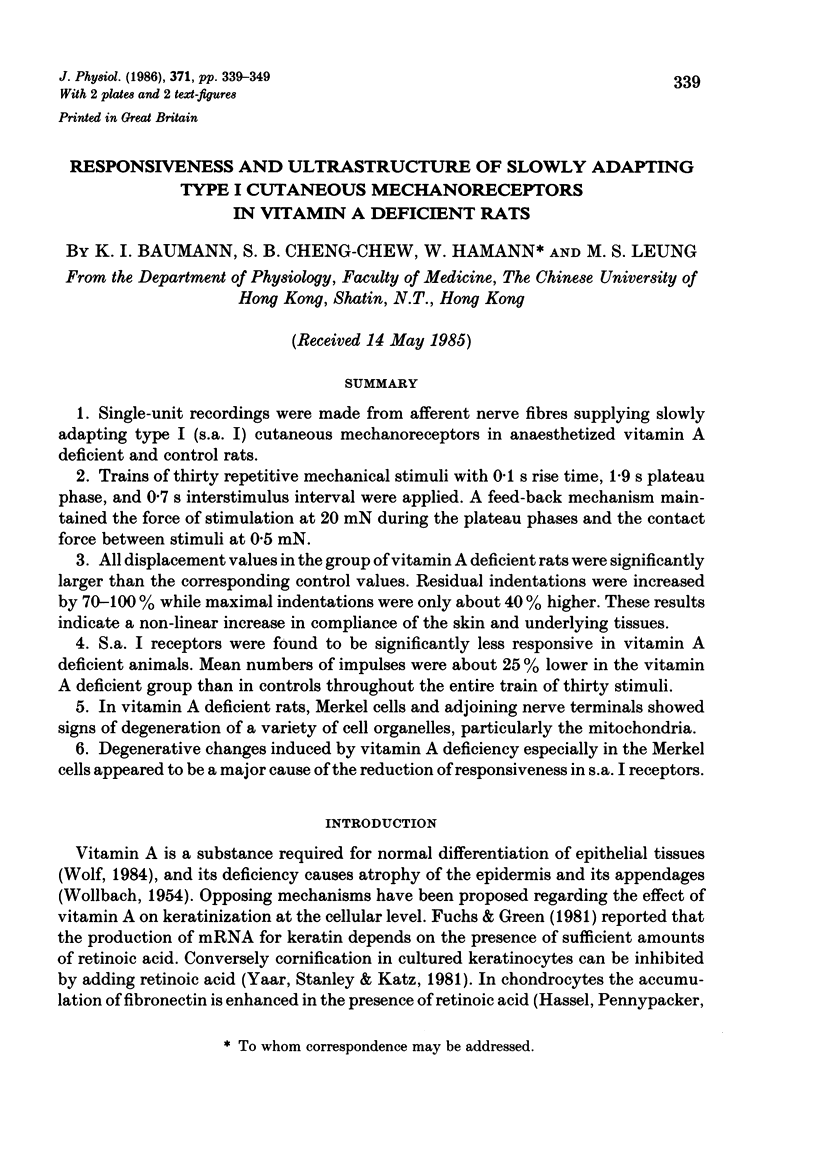
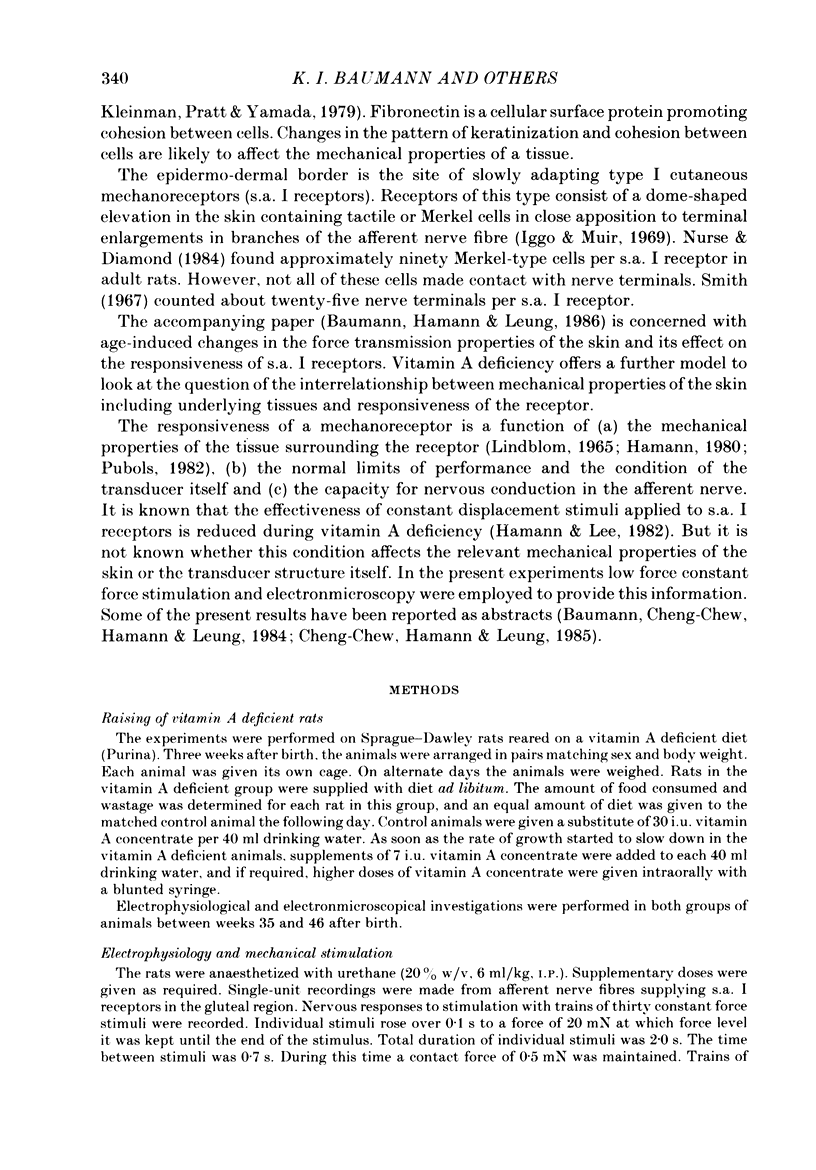
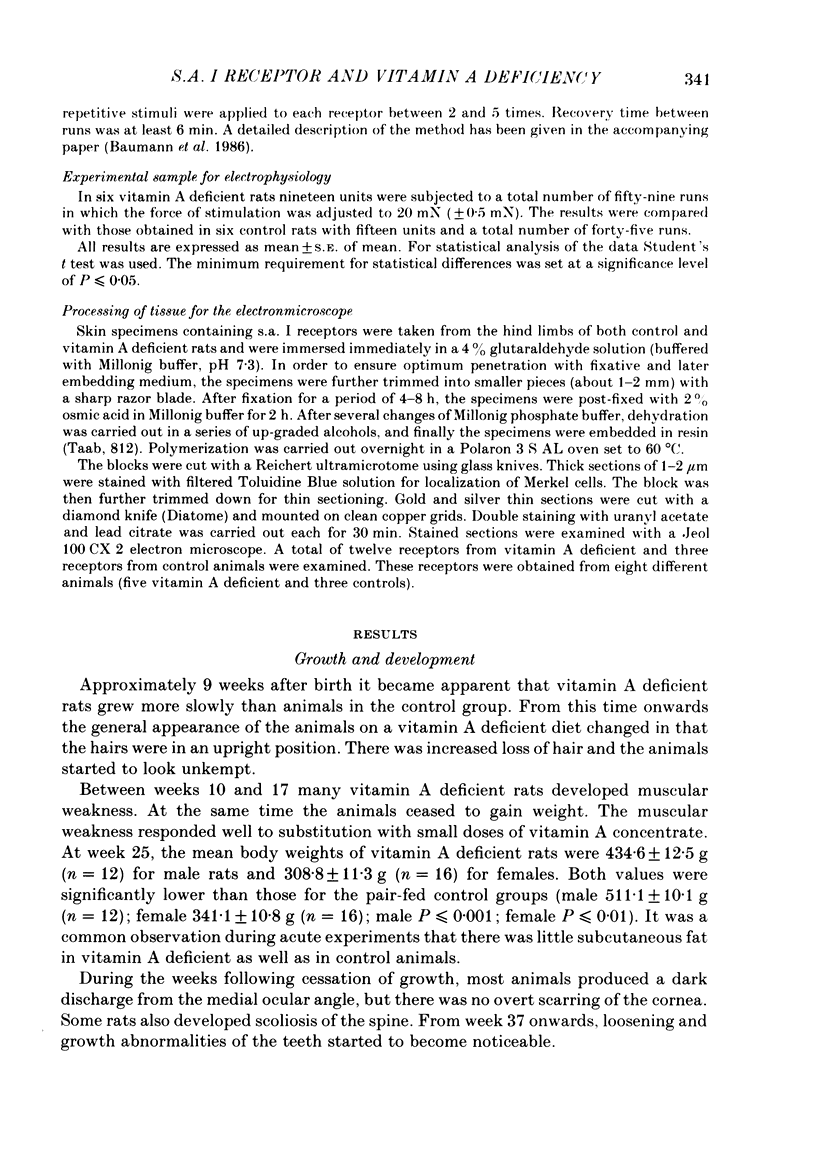
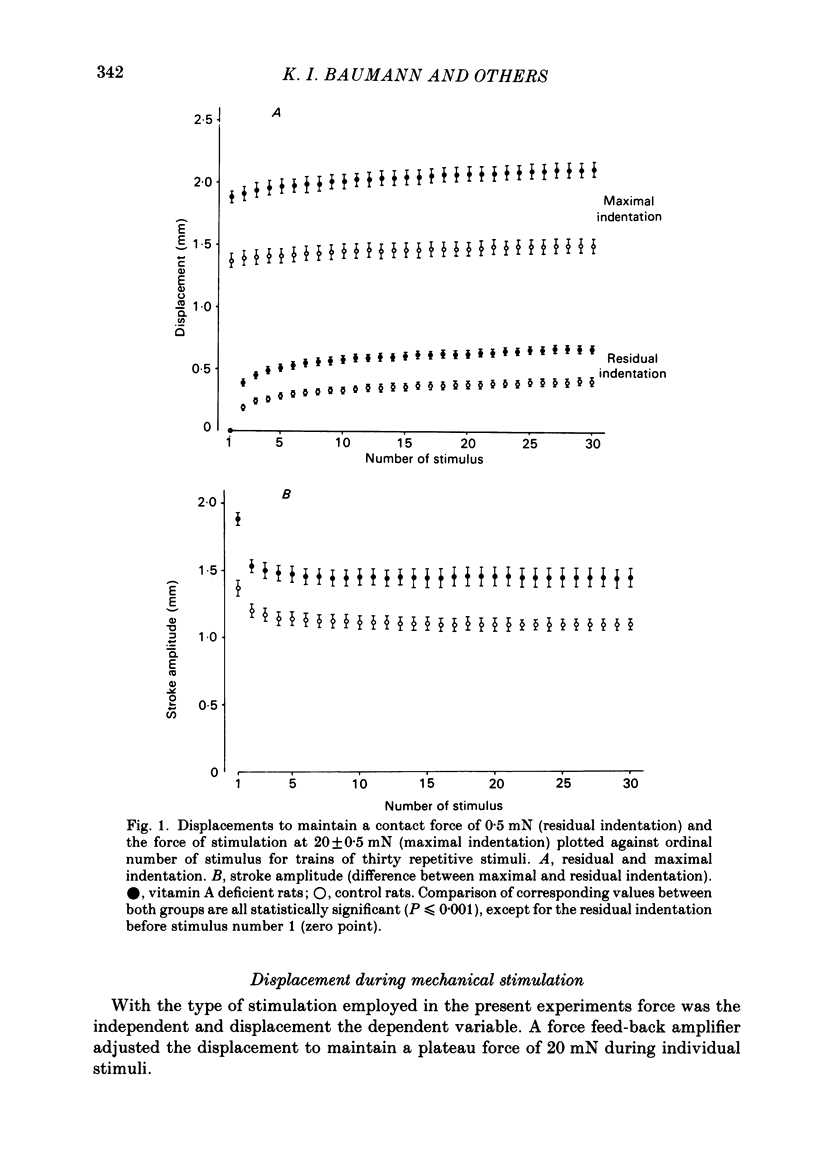
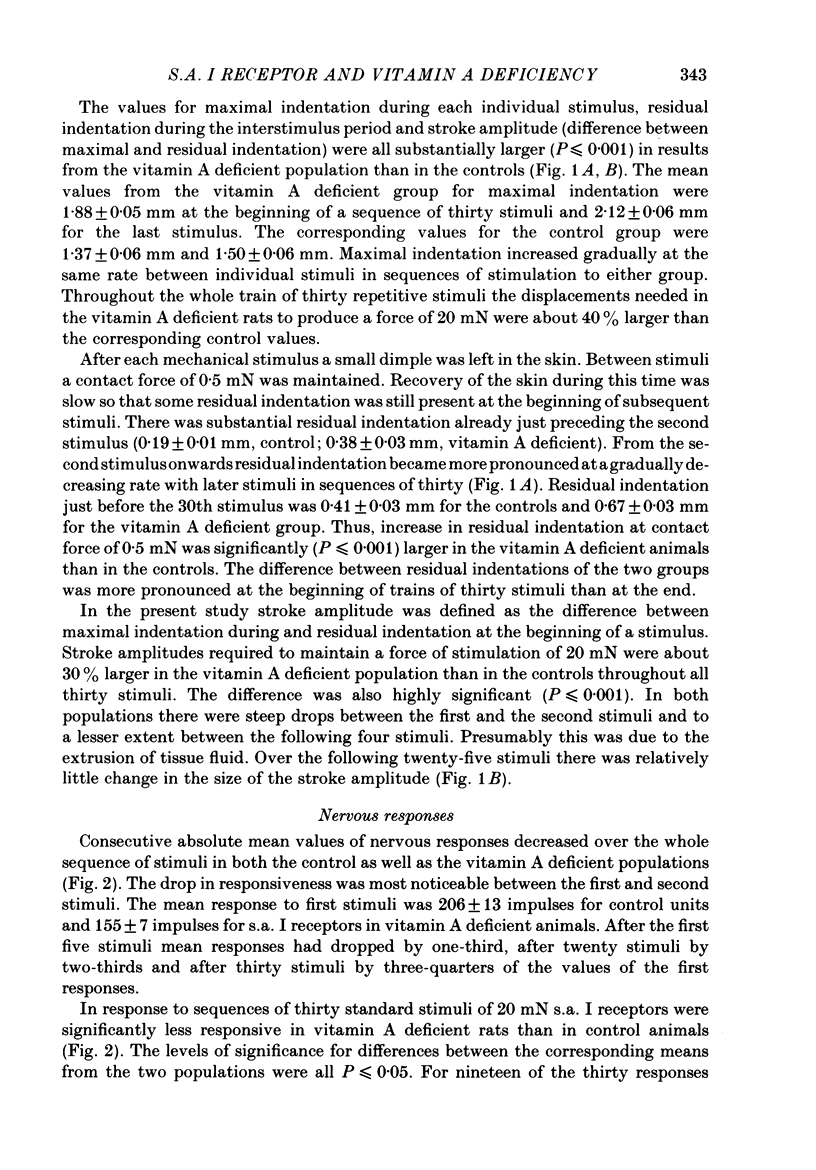
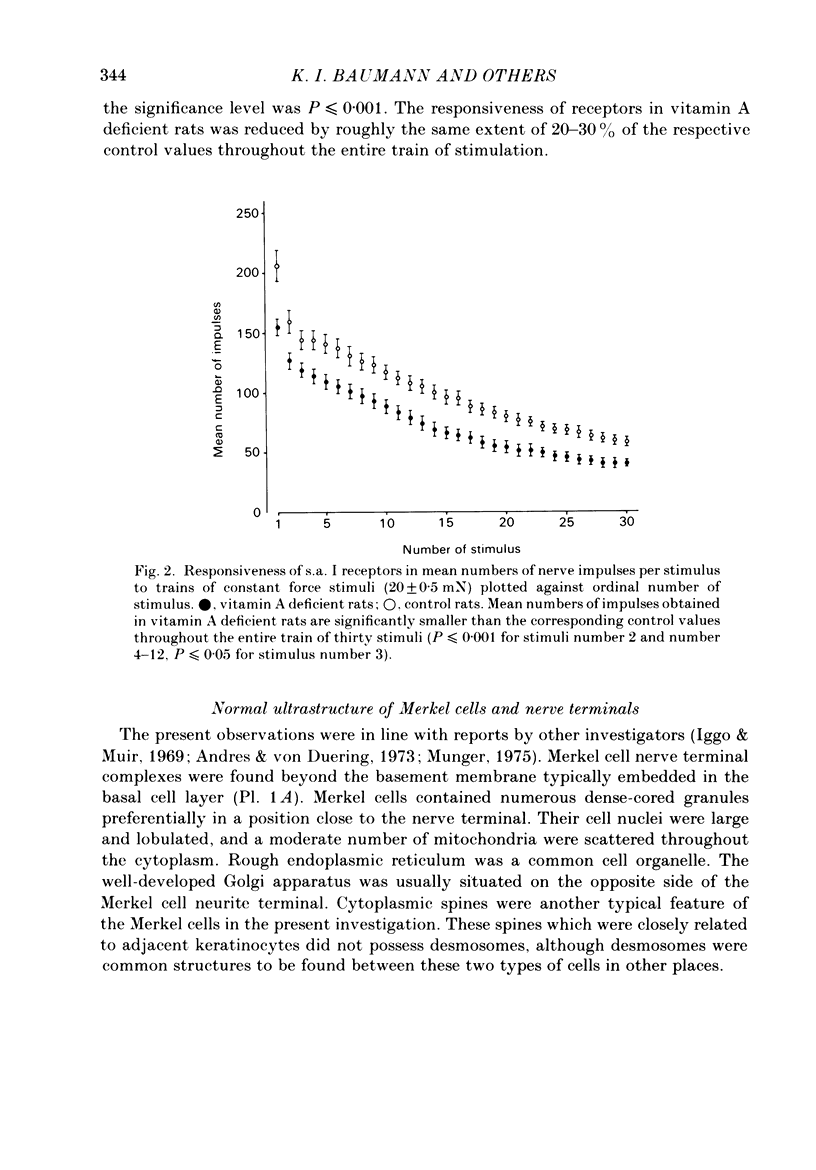
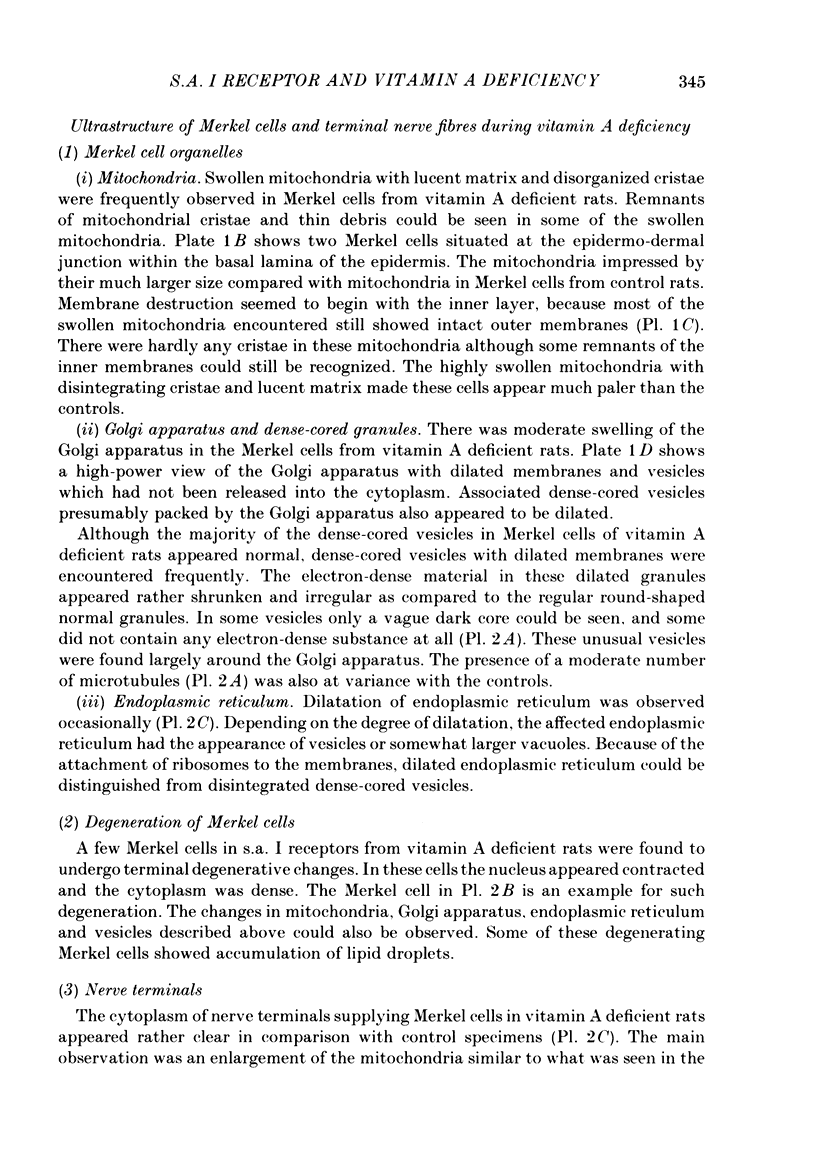
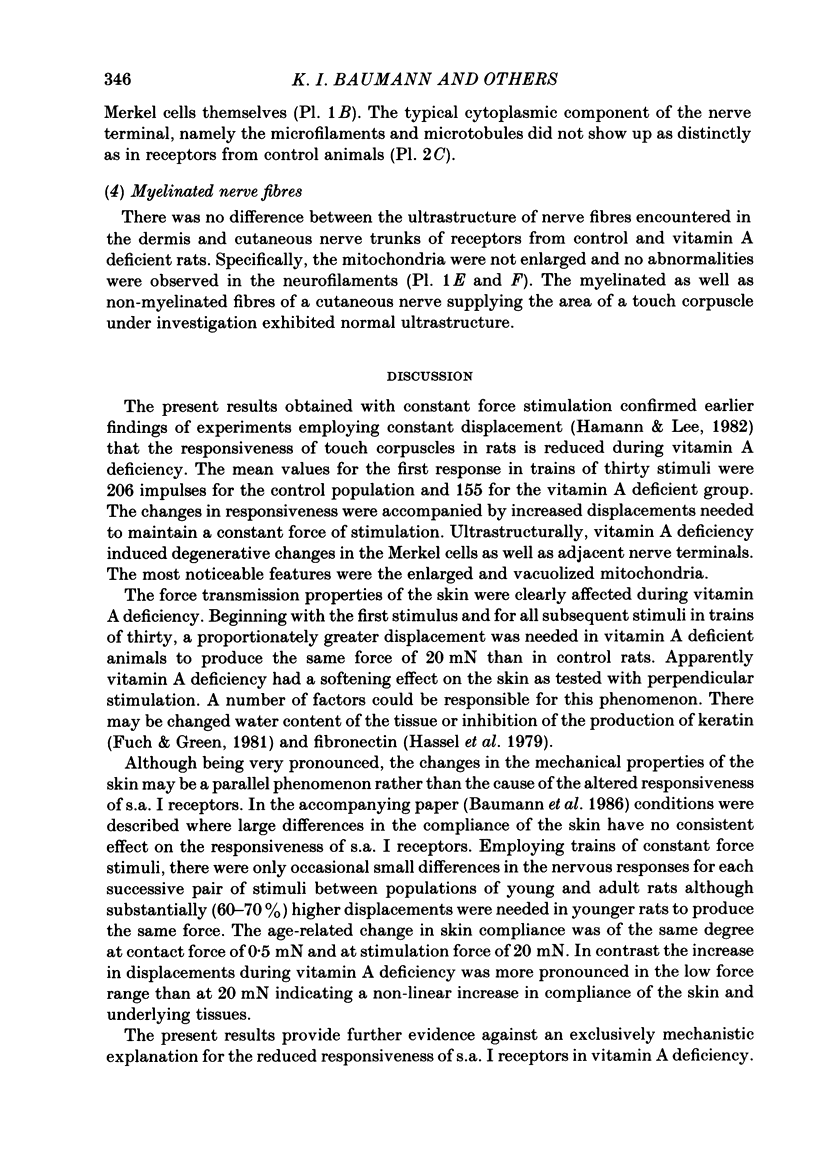
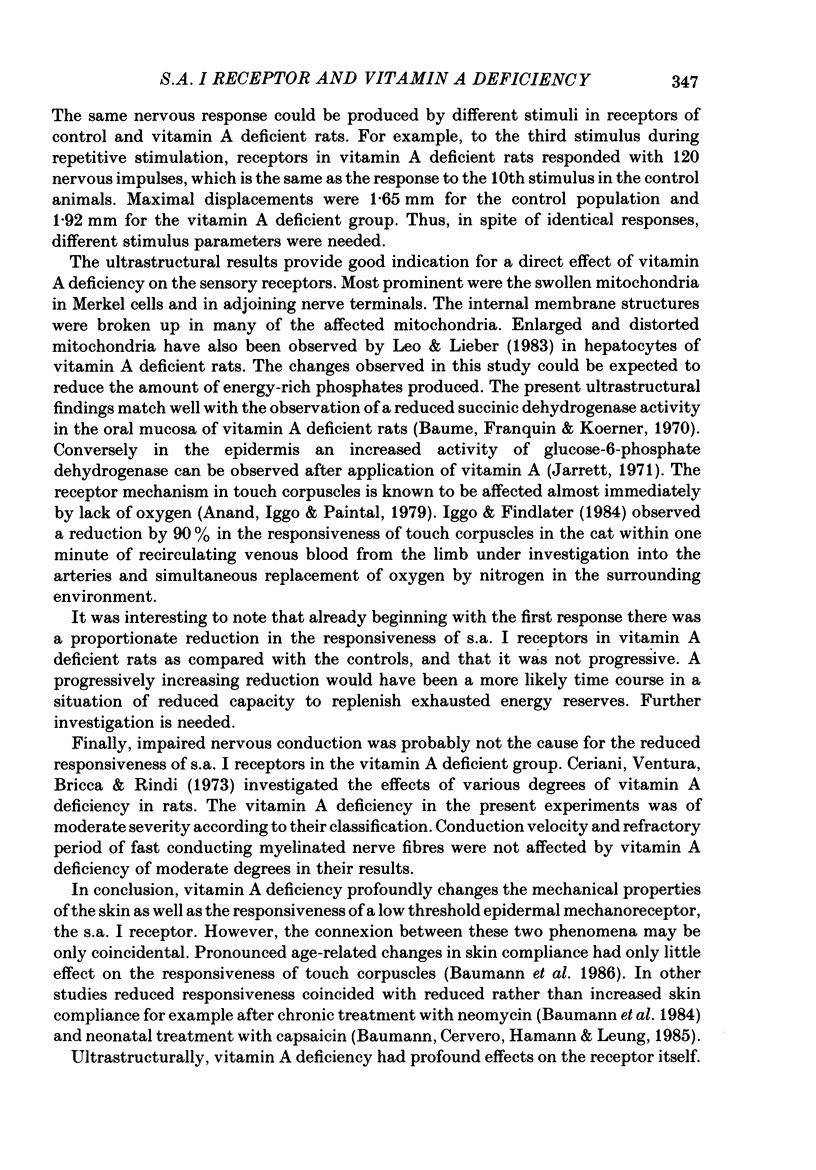
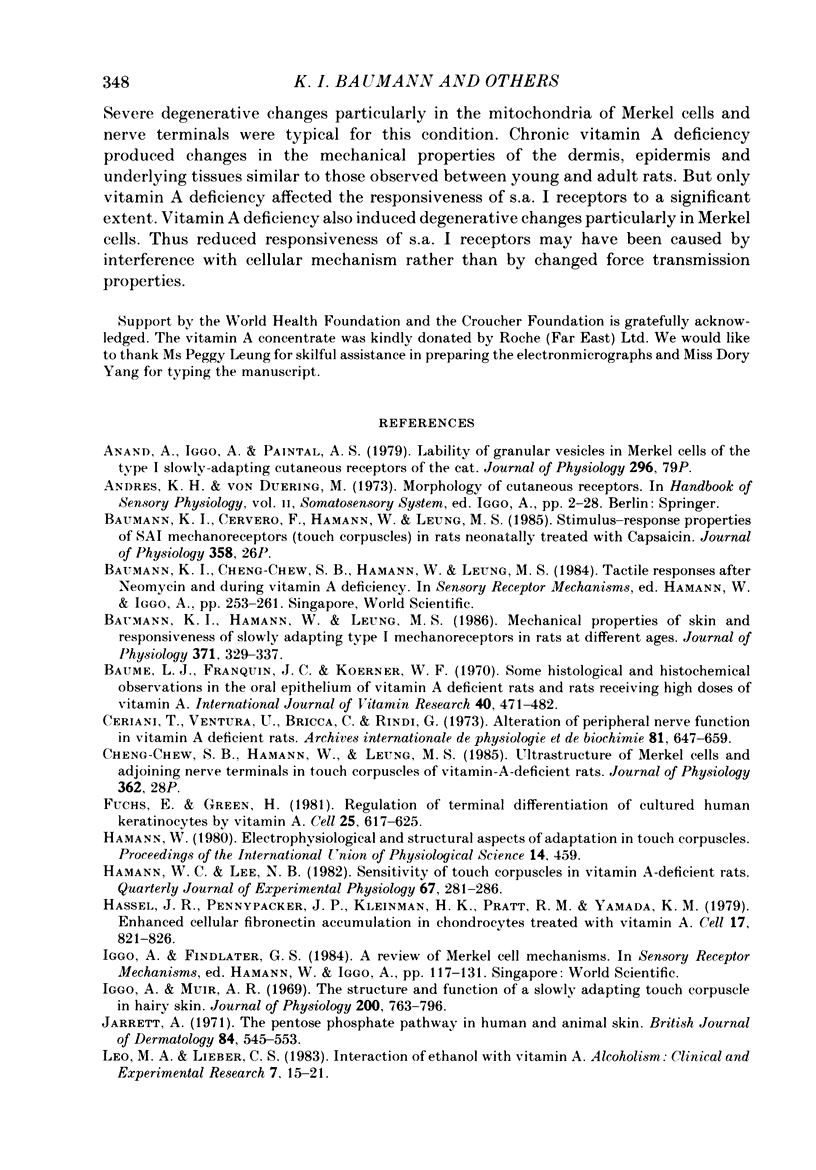
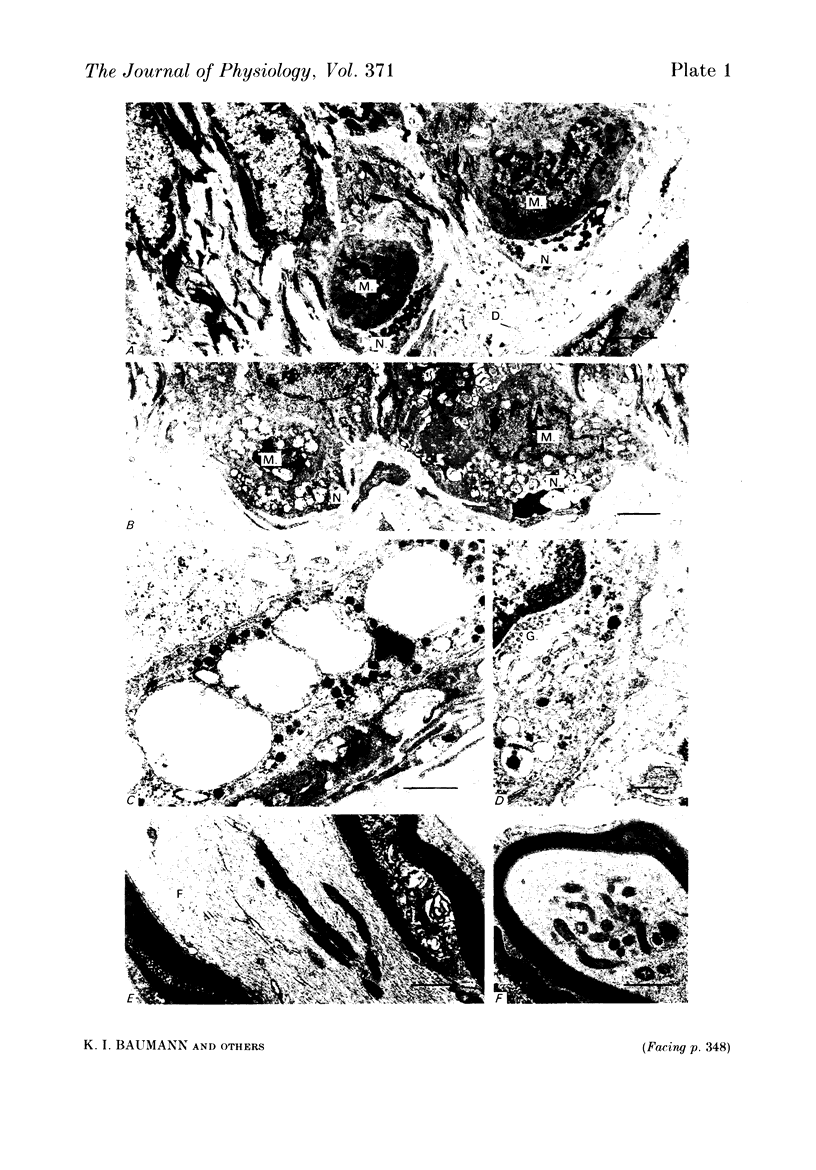
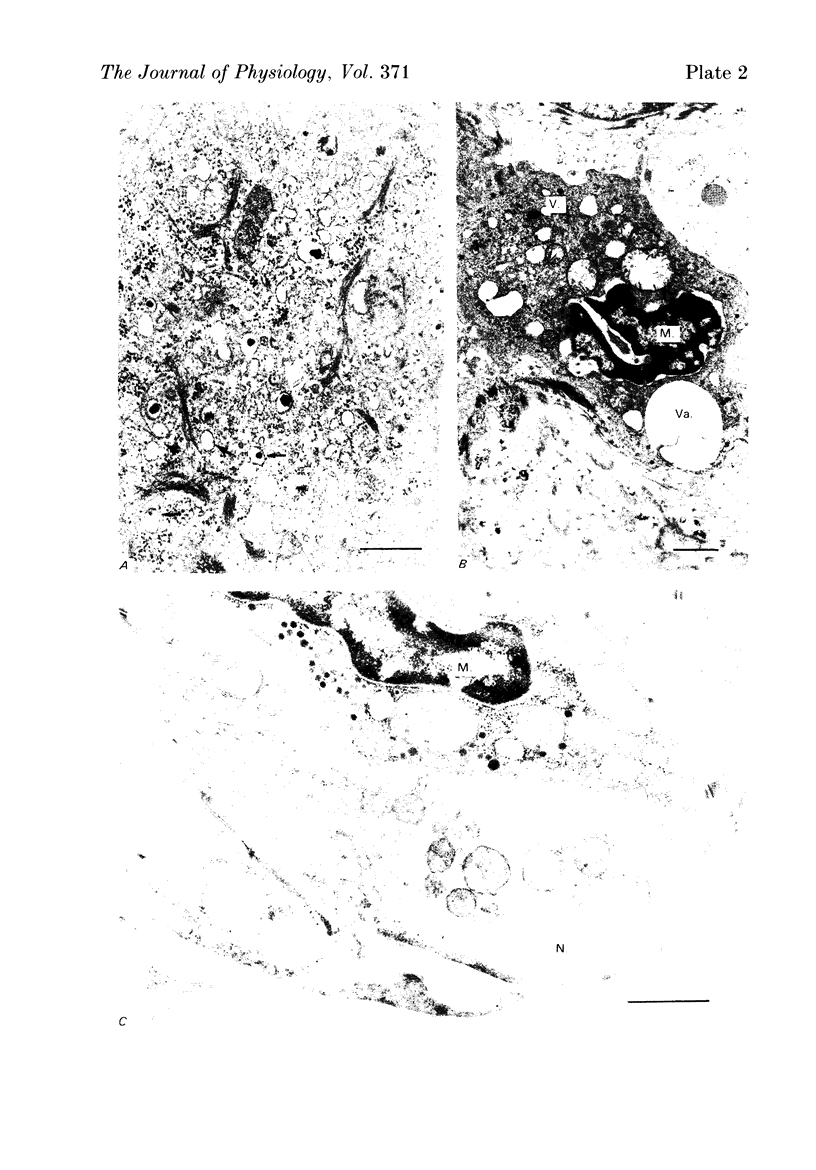
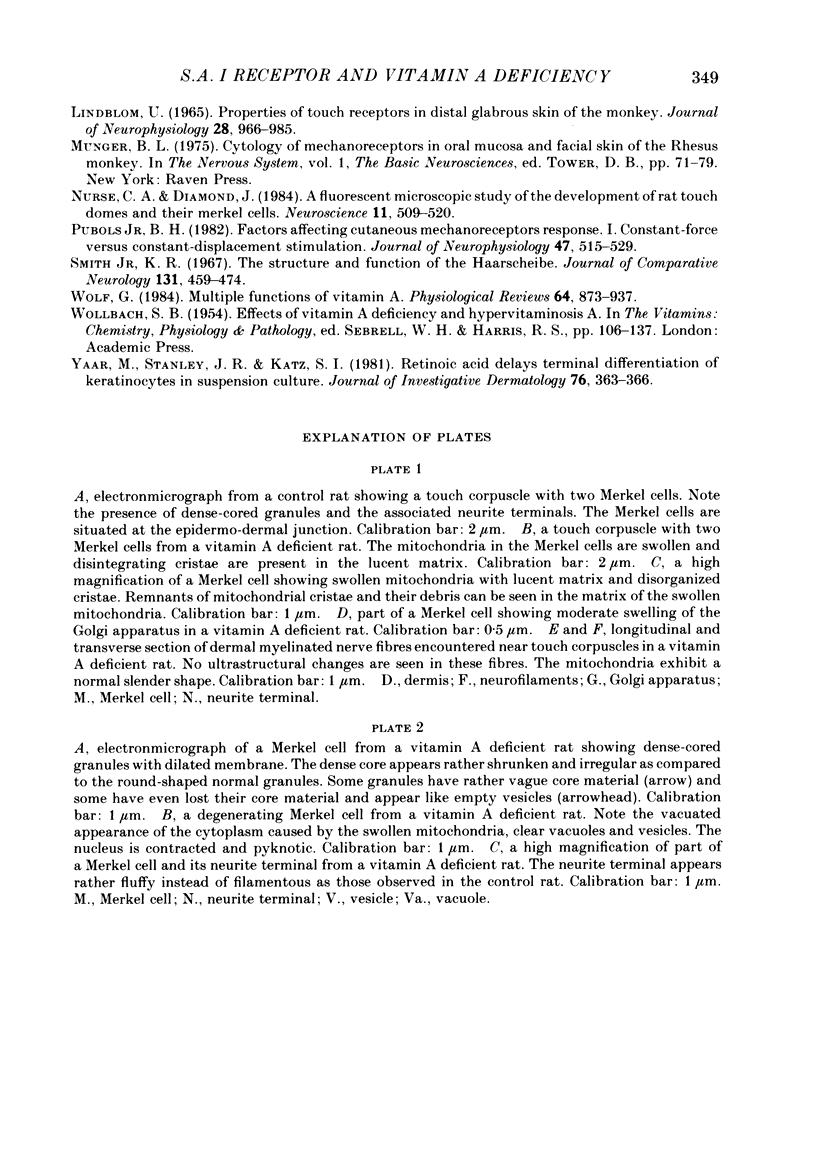
Images in this article
Selected References
These references are in PubMed. This may not be the complete list of references from this article.
- Baumann K. I., Hamann W., Leung M. S. Mechanical properties of skin and responsiveness of slowly adapting type I mechanoreceptors in rats at different ages. J Physiol. 1986 Feb;371:329–337. doi: 10.1113/jphysiol.1986.sp015978. [DOI] [PMC free article] [PubMed] [Google Scholar]
- Baume L. J., Franquin J. C., Körner W. F. Some histological and histochemical observations in the oral epithelium of vitamin A deficient rats and rats receiving high doses of vitamin A. Int Z Vitaminforsch. 1970;40(4):471–482. [PubMed] [Google Scholar]
- Ceriani T., Ventura U., Bricca C., Rindi G. Alteration of peripheral nerve function in vitamin A-deficient rats. Arch Int Physiol Biochim. 1973 Oct;81(4):647–659. doi: 10.3109/13813457309074469. [DOI] [PubMed] [Google Scholar]
- Fuchs E., Green H. Regulation of terminal differentiation of cultured human keratinocytes by vitamin A. Cell. 1981 Sep;25(3):617–625. doi: 10.1016/0092-8674(81)90169-0. [DOI] [PubMed] [Google Scholar]
- Hamann W. C., Lee N. B. Sensitivity of touch corpuscles in vitamin A-deficient rats. Q J Exp Physiol. 1982 Apr;67(2):281–286. doi: 10.1113/expphysiol.1982.sp002636. [DOI] [PubMed] [Google Scholar]
- Hassell J. R., Pennypacker J. P., Kleinman H. K., Pratt R. M., Yamada K. M. Enhanced cellular fibronectin accumulation in chondrocytes treated with vitamin A. Cell. 1979 Aug;17(4):821–826. doi: 10.1016/0092-8674(79)90322-2. [DOI] [PubMed] [Google Scholar]
- Iggo A., Muir A. R. The structure and function of a slowly adapting touch corpuscle in hairy skin. J Physiol. 1969 Feb;200(3):763–796. doi: 10.1113/jphysiol.1969.sp008721. [DOI] [PMC free article] [PubMed] [Google Scholar]
- Jarret A. The pentose phosphte pathway in human and animal skin. Br J Dermatol. 1971 Jun;84(6):545–553. [PubMed] [Google Scholar]
- Leo M. A., Lieber C. S. Interaction of ethanol with vitamin A. Alcohol Clin Exp Res. 1983 Winter;7(1):15–21. doi: 10.1111/j.1530-0277.1983.tb05404.x. [DOI] [PubMed] [Google Scholar]
- Lindblom U. Properties of touch receptors in distal glabrous skin of the monkey. J Neurophysiol. 1965 Sep;28(5):966–985. doi: 10.1152/jn.1965.28.5.966. [DOI] [PubMed] [Google Scholar]
- Nurse C. A., Diamond J. A fluorescent microscopic study of the development of rat touch domes and their Merkel cells. Neuroscience. 1984 Feb;11(2):509–520. doi: 10.1016/0306-4522(84)90041-1. [DOI] [PubMed] [Google Scholar]
- Pubols B. H., Jr Factors affecting cutaneous mechanoreceptor response. I. Constant-force versus constant-displacement stimulation. J Neurophysiol. 1982 Mar;47(3):515–529. doi: 10.1152/jn.1982.47.3.515. [DOI] [PubMed] [Google Scholar]
- Wolf G. Multiple functions of vitamin A. Physiol Rev. 1984 Jul;64(3):873–937. doi: 10.1152/physrev.1984.64.3.873. [DOI] [PubMed] [Google Scholar]
- Yaar M., Stanley J. R., Katz S. I. Retinoic acid delays the terminal differentiation of keratinocytes in suspension culture. J Invest Dermatol. 1981 May;76(5):363–366. doi: 10.1111/1523-1747.ep12520026. [DOI] [PubMed] [Google Scholar]



